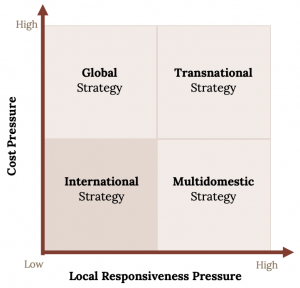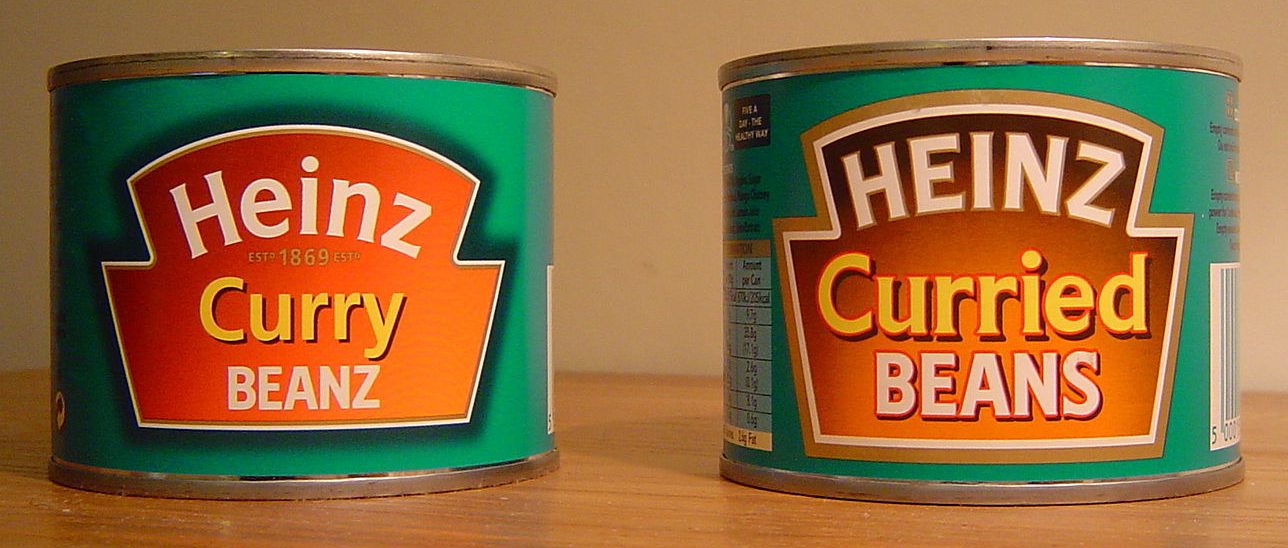9.4 Types of International Strategies
A firm that has operations in more than one country is known as a multinational corporation (MNC). The largest MNCs are major players within the international arena. Walmart’s annual worldwide sales, for example, are larger than the dollar value of the entire economies of Austria, Norway, and Saudi Arabia. Although Walmart tends to be viewed as an American retailer, the firm earns 35% of its revenues outside the United States. Walmart owns significant numbers of stores in Mexico, Central America, Brazil, Japan, the United Kingdom, Canada, Chile, Botswana, and Argentina. Walmart also participates in joint ventures in China and India. Even more modestly sized MNCs are still very powerful. If Kia were a country, its current sales level of approximately $21 billion would place it in the top 100 among the more than 180 nations in the world.
Multinationals such as Kia and Walmart must choose an international strategy to guide their efforts in various countries. There are four main international strategies available:
- International
- Multi-domestic
- Global
- Transnational
(Figure 9.2). Each strategy involves a different approach to trying to be sensitive to (1) costs and efficiencies on one hand and trying to be responsive to (2) variation in customer preferences and market conditions across nations. Responding or not responding to these two pressures of cost and local cultural conditions determines which of the four types of international strategies will be pursued.

International Strategy
Firms pursuing an international strategy are neither concerned about costs nor adapting to the local cultural conditions. They attempt to sell their products internationally with little to no change. When Harley Davidson sells motorcycles abroad, they do not need to lower their prices or adapt the bike to local motorcycle standards. People in other countries buy a Harley particularly because it is different from the local motorcycles. Buyers want the American look and the sound and power of a Harley, and will pay for that differentiation. Belgium chocolate exporters do not lower their price when exporting to the American market to compete with Hershey’s, nor do they adapt their product to American tastes. They use an international strategy. Starbucks and Rolex watches are other examples of firms pursuing the international strategy.
Multi-Domestic Strategy
A firm using a multi-domestic strategy does not focus on cost or efficiency but emphasizes responsiveness to local requirements within each of its markets. Rather than trying to force all of its American-made shows on viewers around the globe, Netflix customizes the programming that is shown on its channels within dozens of countries, including New Zealand, Portugal, Pakistan, and India. Similarly, food company H. J. Heinz adapts its products to match local preferences. Because some Indians will not eat garlic and onion, for example, Heinz offers them a version of its signature ketchup that does not include these two ingredients. Outback Steakhouse uses the multi-domestic strategy in the multiple countries where it operates, adapting to local eating preferences but not lowering prices significantly.

Global Strategy
A firm using a global strategy sacrifices responsiveness to local requirements within each of its markets in favor of emphasizing lower costs and better efficiency. This strategy is the complete opposite of a multi-domestic strategy. Some minor modifications to products and services may be made in various markets, but a global strategy stresses the need to gain low costs and economies of scale by offering essentially the same products or services in each market.
Microsoft, for example, offers the same software programs around the world but adjusts the programs to match local languages. Similarly, consumer goods maker Procter & Gamble attempts to gain efficiency by creating global brands whenever possible. Global strategies also can be very effective for firms whose product or service is largely hidden from the customer’s view, such as silicon chip maker Intel. Lenovo also uses this strategy. For such firms, variance in local preferences is not very important, but pricing is.
Transnational Strategy
A firm using a transnational strategy seeks a middle ground between a multi-domestic strategy and a global strategy. Such a firm tries to balance the desire for lower costs and efficiency with the need to adjust to local preferences within various countries. For example, large fast-food chains such as McDonald’s and Kentucky Fried Chicken (KFC) rely on the same brand names and the same core menu items around the world. These firms make some concessions to local tastes too. In France, for example, wine can be purchased at McDonald’s. This approach makes sense for McDonald’s because wine is a central element of French diets. In Saudi Arabia, McDonalds serves a McArabia Chicken sandwich, and its breakfast menu features no pork products like ham, bacon, or sausage.
Section Video
Global Strategies [02:45]
The video for this lesson discusses global strategy options.
You can view this video here: https://youtu.be/83rBbT5Qq_E.
Key Takeaway
- Multinational corporations choose from among four basic international strategies: (1) international (2) multi-domestic, (3) global, and (4) transnational. These strategies vary depending on two pressures; 1) on emphasizing low cost and efficiency and 2) responding to the local culture and needs.
Exercises
- Which of the four international strategies is Kia using? Is this the best strategy for Kia to be using?
- Identify examples of companies using each of the four international strategies other than those described above. Which company do you think is best positioned to compete in international markets?
Image Credits
Figure 9.9: Kindred Grey (2020). “Cost pressure v. Local responsiveness pressure.” CC BY-SA 4.0. Retrieved from: https://commons.wikimedia.org/wiki/File:Cost_pressure_v._Local_responsiveness_pressure.png.
Figure 9.10: AtelierJoly. “Curried Beans.” CC BY-SA 3.0. Cropped. Retrieved from https://commons.wikimedia.org/wiki/File:Curry_Beanz.jpg.
Video Credits
pb venkat. (2015, May 14). Global strategies [Video]. YouTube. https://youtu.be/83rBbT5Qq_E.
A firm that has operations in more than one country

